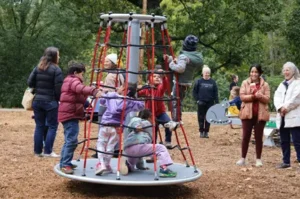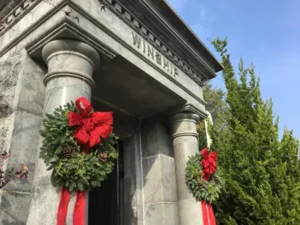By Robert M. Sarwark
Note: This article originally ran in the April 2020 issue. However, since the COVID-19 pandemic was just beginning at that time, this information was probably overlooked. In honor of Atlanta’s NPU System turning 50 this year, we hereby run this article again to raise awareness and understanding of our city’s unique arrangement. Some minor edits have been made.
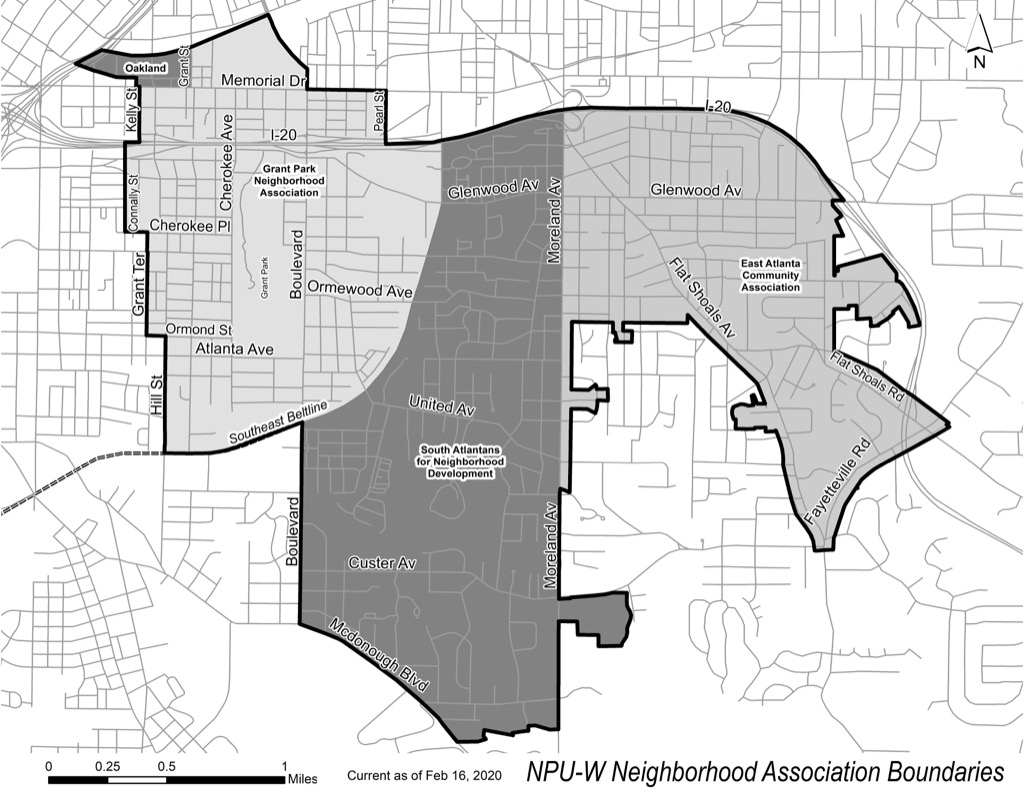
NPU-W overlaid with neighborhood associations
How is the City of Atlanta administered and/or governed? Where does the city itself end and some other place begin — Decatur, anyone? Wait, Atlanta is in two counties? Who represents which part of the city at City Council, and what are those boundaries? Where do I go to get help with an issue on my block or to apply for a building license or variance? Is where I live included in a neighborhood association? And what on Earth is an NPU?!
One, some, or perhaps even all of the above questions may have at one time crossed your mind. Whether you’re new or old to Southeast Atlanta, you may still be a little hazy on all the details. After all, there are several layers of the municipal — not to mention county — system, all of which fit together in complicated and sometimes quirky ways. In an effort to help us all better understand our own interconnected and intersectional communities, this article seeks to explain, in layperson’s terms, the relationship between the Porch Press coverage area’s three neighborhood associations (EACA, SAND, and GPNA), two city council districts (1 and 5), two counties (Fulton and DeKalb), and one neighborhood planning unit (designated as “W” or “NPU-W”) that ties it all together. The neighborhood associations include the East Atlanta Community Association (EACA), the Grant Park Neighborhood Association (GPNA), and South Atlantans for Neighborhood Development (SAND).
The first thing to understand is that the City of Atlanta comprises twenty-five neighborhood planning units (NPUs) – A through Z, minus U (to avoid confusion), generally following a north-to-south distribution (see map). EACA, GPNA, and SAND all fall within NPU-W. The NPU system was established in 1974 by the late Mayor Maynard Jackson. According to the City of Atlanta’s website, this system is intended “to provide an opportunity for all citizens to actively participate in the Comprehensive Development Plan, which is the city’s vision for the next five, ten, and fifteen years.” To see a citywide NPU map online, search for “Neighborhoods by NPU” at http://atlantaga.gov.
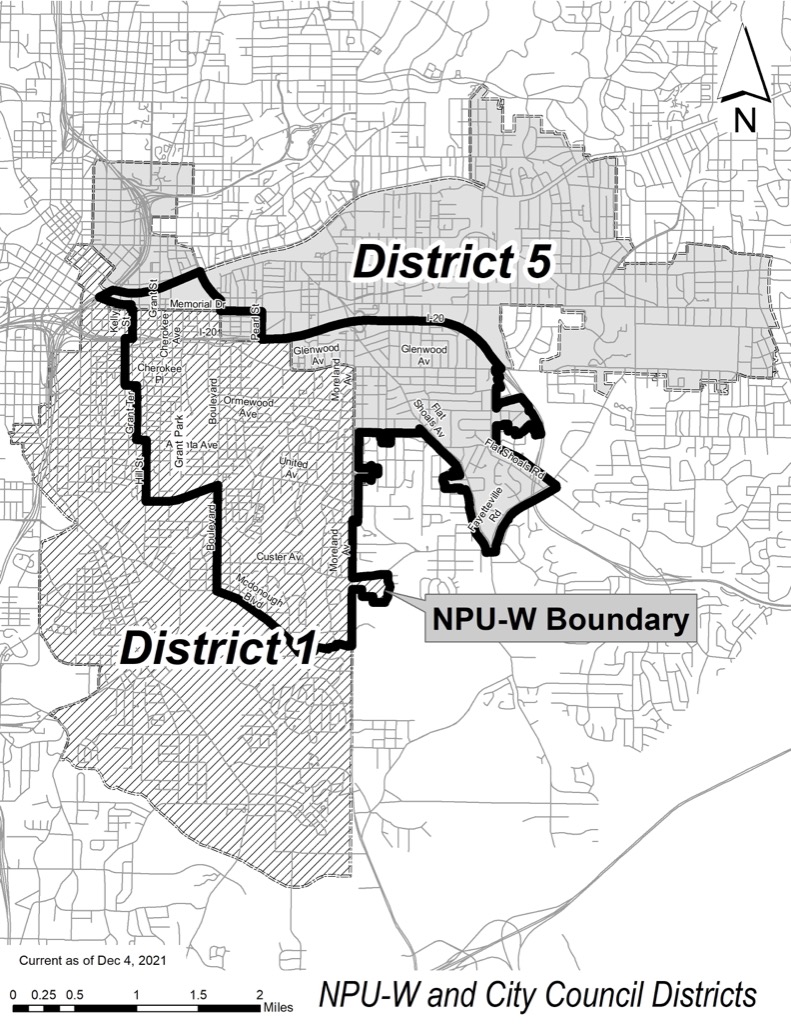
The Porch Press was established almost forty years ago to cover and serve the neighborhoods of NPU-W, which are officially listed by the City of Atlanta as Benteen Park, Boulevard Heights, Custer/McDonough/Guice, Ormewood Park, and Woodland Hills (SAND); East Atlanta (EACA); Grant Park (GPNA), Oakland (no neighborhood association, and not to be confused with Oakland City), and the non-residential State Facility. State Facility is not a neighborhood per se, but a large plot of land with buildings that once included a retirement home for Confederate veterans of the Civil War — hence the former Confederate, now United, Avenue. The area is now used by several Georgia state agencies, including the Department of Transportation. SAND also includes North Ormewood Park, which is not considered a separate neighborhood by the City. Neither is Glenwood Park considered an official neighborhood, but to those who may feel otherwise, in terms of its neighborhood association it is technically split between GPNA and SAND along Bill Kennedy Way.
Whereas NPUs are officially recognized by the city, their constituent neighborhoods — for example, Boulevard Heights or East Atlanta Village — are more often mobilized through their neighborhood associations, which are nonprofit corporations formed voluntarily by their residents and local businesses. But on a broader level in the case of NPU-W, the residents or business owners of EACA (http://eaca.net; and EABA — the East Atlanta Business Association), GPNA (http://gpna.org), and SAND (http://sandatlanta.org) unite through NPU-W to advocate for their residents and businesses on a citywide level.
In terms of Atlanta City Council districts, this is where things get even more interesting. NPU-W is overlapped by two of these districts: 1 and 5. And while it’s true that Moreland Avenue is the line between Fulton and DeKalb Counties, don’t let that fool you into a false sense of complacency about understanding the City Council district map! To a certain extent it’s true that Moreland does double duty as the boundary between the SAND neighborhoods and those of EACA, which is also in general reflected in the Atlanta City Council Districts. But not entirely. In other words, GPNA and SAND (in City Council District 1/Fulton County) are mostly (but not entirely!) represented by Council Member Jason Winston. EACA (in District 5/DeKalb County) is entirely represented by Council Member Liliana Bakhtiari. However – you guessed it – there are exceptions! One is that both Oakland Cemetery (and neighborhood) and the rectangular area to the east of Boulevard (to Pearl Street; unofficially referred to by many of its residents as “Taco Town”), and to the south of Memorial Drive (to Interstate 20), are part of Member Bakhtiari’s District 5 even though they are also in Grant Park/GPNA. North Ormewood Park, despite being in Fulton County and a part of the otherwise mostly District 1 SAND, is also in District 5.
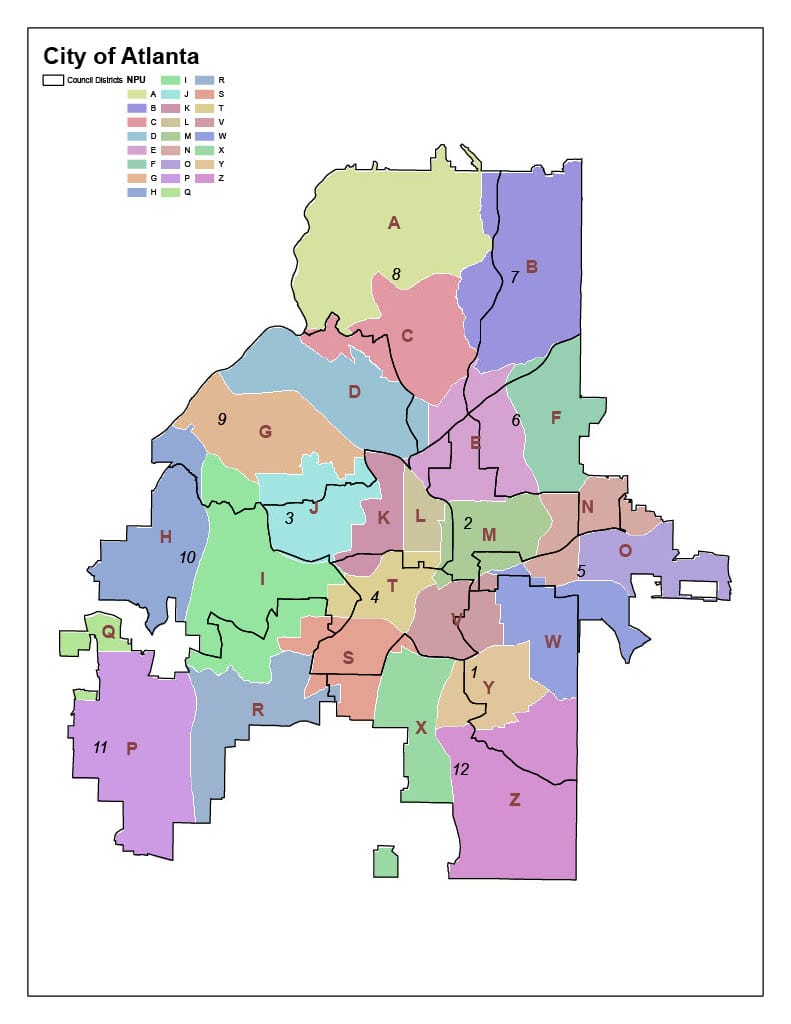
City of Atlanta Neighborhood Planning Units overlaid with City Council Districts
Lost yet? You are not alone. To see NPU-W overlaid with its two city council districts, along with the Beltline and other important landmarks, go online to see this interactive Google Map: https://bit.ly/2SwqvzH. For more about the Atlanta City Council in general, go to https://citycouncil.atlantaga.gov/.
NPU-W general body meetings take place every third Wednesday of the month at 7:00pm. Since the pandemic, they have been conducted entirely online. Upcoming meetings are September 18, October 16, November 20, and December 18, 2024. Register via https://cityofatlantanpu-w.org/meetings/. All residents and business owners are invited and encouraged to attend, especially if they wish to engage more efficiently with or petition Atlanta City Council in some way. Those currently involved with the NPU-W neighborhood associations are particularly encouraged to participate. The current chair of NPU-W is Skyler Hassan, who can be contacted at leadership@npu-w.org.
See the various links above or in this issue’s events calendar (back page) for information on NPU-W’s upcoming neighborhood association general-membership meetings. Monthly neighborhood association meetings are a great way to meet your neighbors, find shared interests, hear about upcoming events, and learn about important issues affecting not only your neighborhood association, but also your greater NPU, city council district, state congressional, county district, and state congressional districts (Georgia Senate and House of Representatives).
If you live within NPU-W, you are entitled to a free monthly copy of the Porch Press, delivered right to your mailbox. To subscribe, email Sandra at distribution@theporchpress.com or call 404-285-8204 with your mailing address. We’ll check your address (please make sure to include your ZIP Code) and if it’s within NPU-W, we’ll add you to the mailing list.

